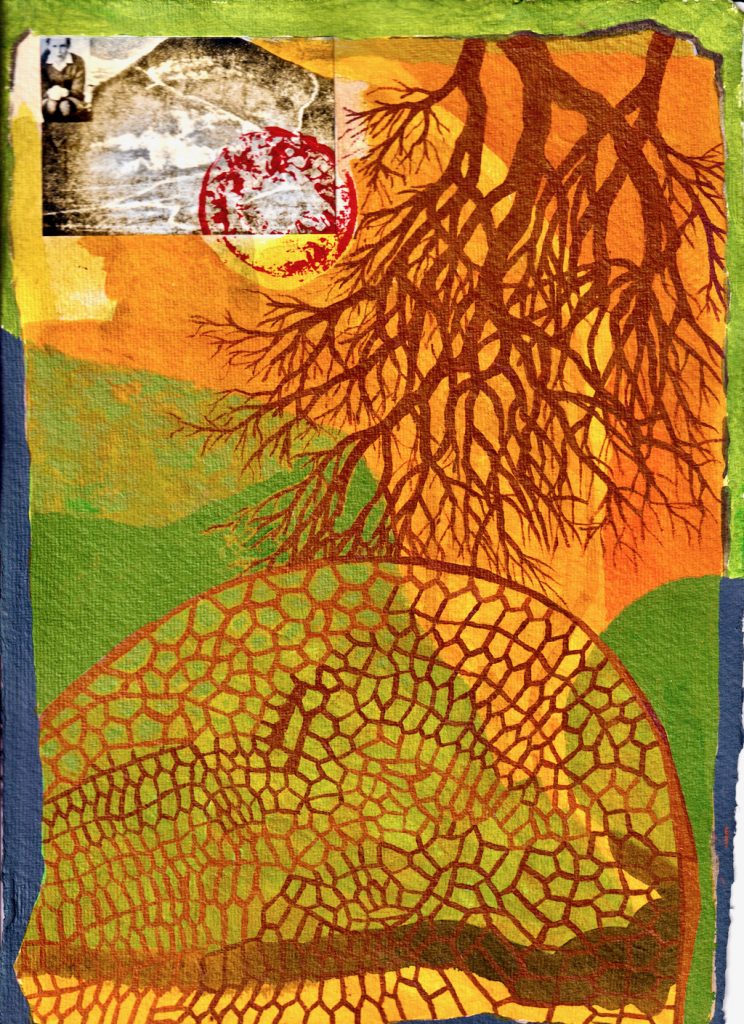
To the extent that a particular way of producing knowledge is dominant, all other claims will be judged with reference to it. In the extreme case, nothing recognisable as knowledge can be produced outside of the socially dominant form.
Michael Gibbons (The New Production of Knowledge: The dynamics of science and research in contemporary societies pp. 1-2).
The event I’m trying to describe seems at one time or another to involve all the different people we each are. In particular, I suspect, the part of us attuned to what Nuala Ní Dhomhnaill found indexed under: “Neacha neamhbeo agus nithe nách bhfuil ann” (“Unalive beings and things that don’t exist”). Beings and things ‘from “an saol eile”, the “otherworld”’. (Nuala Ní Dhomhnaill Selected Essays p. 19). But particularly, perhaps, thelistener to what hides in silences.
Rebecca Solnit writes: ‘To hear is to let the sound wander all the way through the labyrinth of your ear; to listen is to travel the other way to meet it’. (Rebecca Solnit The Faraway Nearby p. 193). As a student I listened to Fairport Convention’s Tam Lin which, thirty years later, became a door to a particular hinterland. At the same time the Surrealist painter and writer Penelope Rosemont was spending her Sunday afternoons listening to the blues on Chicago’s Maxwell Street. Once, when Carrie Robinson and her band were playing, she noticed a man at the front of the crown go rigid, drop his bag of groceries, and enter a trance in which he hopped and spun to the music. Maybe forty-five years after first hearing Tam Lin, I read Katy Beinart’s description of Goute Sel, a performance she and Mabelle Williams, her Haitian collaborator, made for the Ghetto Biennale at Port-au-Prince. In it they mirrored each other’s movements and gestures during the remaking of a Vodou veve as an art performance. Katy writes:
… at some points during the ritual, I felt a loss of self and of my identity…. as the performance went on, I felt totally caught up in the making of the veve, to the point where I forgot about the presence of the audience. Afterwards, someone told me that one of the Haitians thought I was a real mambo and that they saw the performance as a Vodou ritual rather than an artwork.
Katherine Beinart
(Detour and Retour: Practices and poetics of salt as narratives of relation and re-generation in Brixton’. Unpublished PhD thesis p. 383).
Today these events converge, prompting me to explore elsewhere by ear. “By ear”? Kathleen Jamie’s poem Tree on the Hill ends: ‘a hare with its world eyes, listening’. (in the London Review of Books September 10th, 2020 p. 20). When I’m down south, her hare takes me north again to where the cry of curlews prompts the ‘gesturing beyond’ at the heart of Jamie’s poem. She also provided me with an abiding image of the world’s ultimate seamlessness. Asked about the relationship between “nature” and “culture”, she replied: ‘You’re washing socks in the kitchen sink with the window open and you hear a curlew call. Where, in that moment, are “nature” and culture”’?